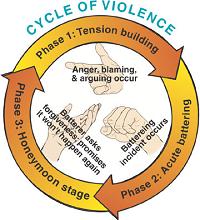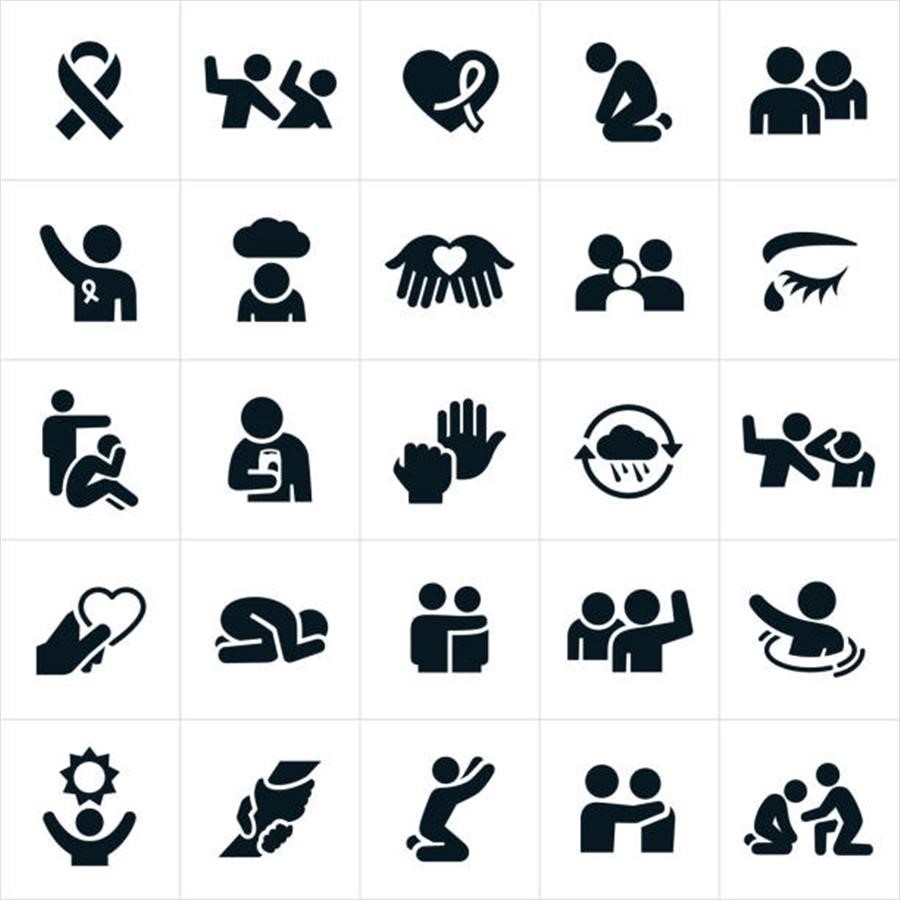Domestic violence tends to follow a specific pattern over time called the “cycle of violence“. The cycle of violence has three stages:
| During the tension-building phase, abusers often verbally harass their partners. They are afraid that their partners will leave them and they become more possessive, jealous, and aggressive. During this phase, partners may do anything to try and keep the peace. They are very nurturing and go along with whatever the abuser wants. Some victims may try and set the abusers off in order to get the abuse over with. Partners often make excuses for abusers’ behavior during the tension-building phase. | 
The second phase involves acute battering. Abusers are extremely unpredictable and often seem to be out of control. Abusers blame their partners for the abuse and may fail to confine their abusive behavior to the home. Abuse may not necessarily be physical. It can involve humiliation or intimidation as well. Partners are left to passively accept the abuse and often minimize the abuse to themselves or others who may question them. |
The last phase is often referred to as the honeymoon period because abusers are calm, loving and apologize for their actions, promising their partners that “it will never happen again.” Partners often feel guilty about possibly leaving the abuser. They often hope that the abuser will change. |
Over time, the tension-building and honeymoon stages get shorter and the battering increases. This pattern results in battering incidents that become increasingly longer and more severe. This cycle works to keep partners in abusive relationships by controlling them. Partners hope that abusers do not mean to harm them and will change. Secrecy, fear, lack of opportunity, and low self-esteem all combine to make leaving an abusive partner extremely difficult. Leaving may also be difficult because abusers often escalate violence in order to keep their partners in the relationship. If abusers detect that their partners may leave, their partners’ risk of injury or death increases.
(Copyright 1993 – 2006 University of Missouri. Published by MU Extension, all rights reserved.)



